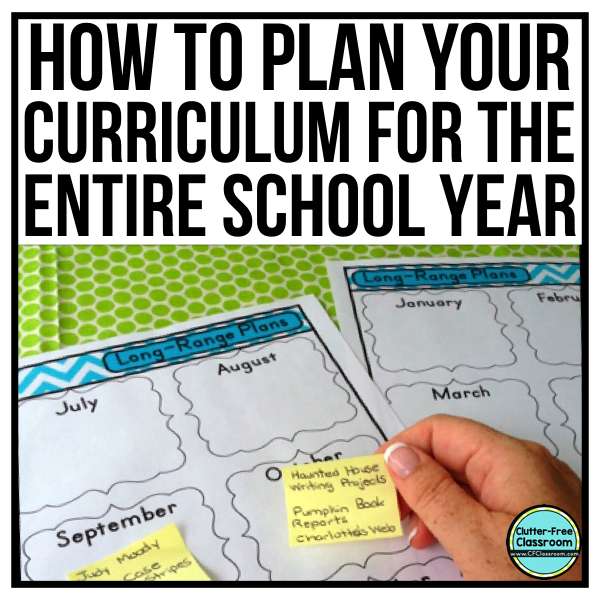
As you start to think about the upcoming school year, it is helpful to start by thinking about “the Big Picture.” What is it that you want and need to cover during your overall time with your students? Creating and utilizing curriculum maps will allow you to be sure that all concepts and standards for your grade level are covered without having to cram too much at the end of the school year. It will also help you to better integrate subject areas for a cross-curricular approach to teaching. Learn all about curriculum mapping and how to make a curriculum map below!

A curriculum map is tool that educators use to map out their school year at the beginning of the year to ensure they allocate time to teach all of the grade level standards and topics. They are also commonly referred to as pacing guides, long-range plans, and year-at-a-glance planning sheets.
Teachers use curriculum maps to organize their overall plans for the school year. These plans ensure that they allocate sufficient time to cover each standard and objective and will provide a framework for building your teaching units. We all know teaching changes day to day, and your plans may not stay on a day-to-day schedule, but having this plan for the year will help you see where you need to get your students and how to better keep on track with all standards that you need to teach in your grade level.
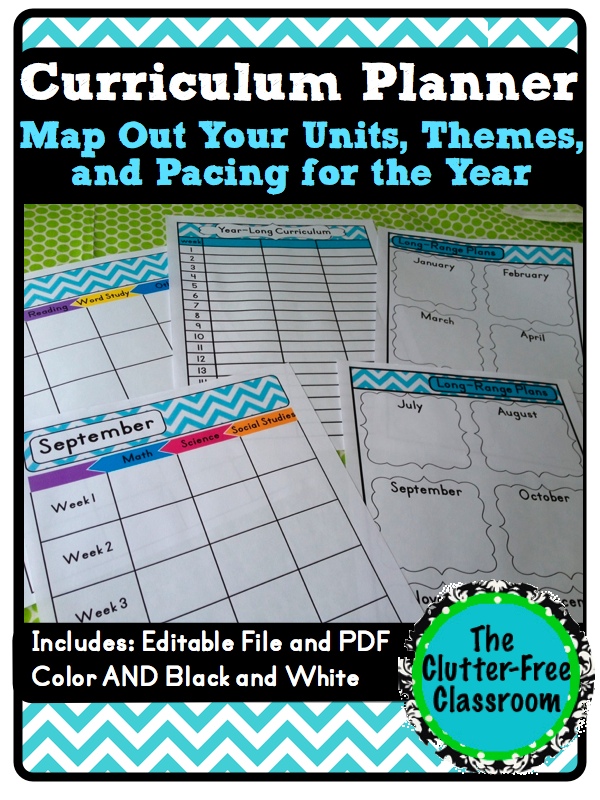

A curriculum map looks like open-ended templates that teachers can fill in. They can be digital resources that teachers type directly onto with their computer. They can also be printable resources that teachers write directly onto or place sticky notes on. It’s all about what works best for the teacher!
A curriculum map should include things like standards, unit topics, assessments, days off from school, special events to plan around, and field trips. The goal is to create a big picture plan. Consider reflecting on what additional components would be helpful for when you fill out your curriculum map.
Below is the 6-step approach for how to make a curriculum map I recommend.
This editable curriculum mapping packet includes four different formats to choose from. There is a colored version and an ink-saving black and white version (which looks fantastic when printed onto colored paper). The templates can be written on by hand or you can type on the editable Powerpoint version.
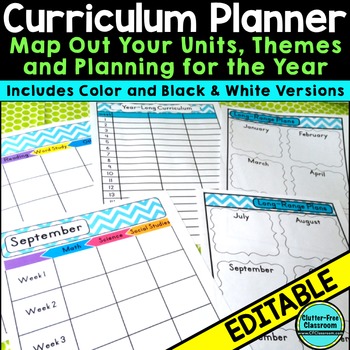
When preparing to make these plans (curriculum maps, pacing guides, etc.), think about what you’ll need material-wise to help you stay organized while planning as well as what resources you have available to help make this planning as smooth as possible. This could include printable guides, colored pens, Post-It notes, last year’s curriculum guide, and notes that you made to yourself from last year. You’ll want to keep in mind projects that work better during a certain time of year, when vacations are, when field trips happen, and any other event that may impact your planning. Having all of this written down as you plan will be especially useful as you come across new ideas, themes, books, and projects that you’ll be using during the year.
It’s important to find out what your district’s requirements are. If they have created a pacing guide, you’ll want to use it to form your own long-range plans.
Begin by jotting down all of the major themes and big ideas that you’ll be teaching. Determine if there are seasonal activities that you want to include. For example, I like to do my Pilgrim and Wampanoag Projects in November, Gingerbread in December, and my Plant Unit in May. Use your standards to find an overarching umbrella of big ideas that you must teach during the year.
Think about read alouds you want to share with your class. How long will they take? When would be a good time to read them? Do they align with any concepts or themes?
After you have established the “Big Ideas”, you can start looking at the nitty-gritty: specific standards, lessons, and pacing. This will take some maneuvering and you’ll need to keep in mind the “extra” school events that can affect your pacing.
I actually like to use Post-It Notes to help me begin the planning process. It beats having to erase on a piece of paper as plans keep changing because I feel a unit would be better taught elsewhere.
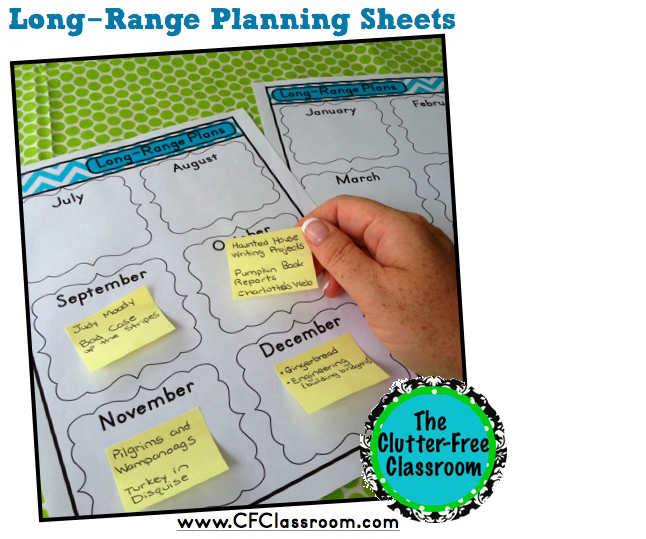
I then like to create two sets of week-by-week plans. One is short and sweet and makes it easy to see things at a glance. The other is a bit more detailed. It is where I jot down ideas for lessons, books to go with the lessons, project ideas, etc.

Don’t forget to write down all your ideas as they come to you as you’re planning! You can always nix the idea later if it isn’t going to work for your classroom. It’s better to have that idea and not need it than need an idea and not have one!
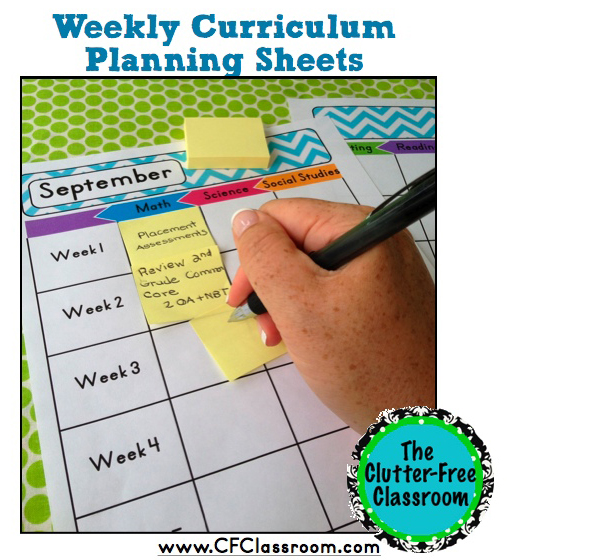 out her weekly curriculum planning sheets" />
out her weekly curriculum planning sheets" />
In the end, you’ll be happy you took the time to organize your overall plans for the year. The plans will ensure that you allocate sufficient time to cover each standard and objective and will provide a framework for building your teaching units. We all know teaching plans might change, therefore your plans may not stay on a day-to-day schedule. Having this plan for the year will help you see where you need to get your students and how to better keep on track with all standards that are to be taught in your grade level.
We hope you found this information about how to make a curriculum map helpful! If you did, then you may also find these posts helpful: